How to organize lighting?
Before choosing fixtures, it is necessary to determine their functional purpose.
- For the design of the living room is usually used the general lighting (or central when the lamps are located under the ceiling), directed (or working when light hits a specific surface), and decorative (designed to create the right atmosphere).
- Ease of use of light depends on the location of the switches. Consider installing them at the stage of creating a design project. The optimal placement options for the switches are: the space near the door, the walls near the sofa for relaxation, as well as the working area.
- It is worth remembering that one chandelier in the living room is not enough. Overhead lighting does not give much light, so there should be at least two sources.
- Light helps visually enlarge a small living room with a low ceiling. One of such methods is the use of floor lamps. It is also recommended to install LED-illumination around the perimeter of the ceiling to visually deepen it.
What lamps are suitable for the hall?
Using devices of different types, you can create several varieties of lighting in the living room.
Spots
Individual objects (paintings, collections of objects) or certain zones can be effectively emphasized with the help of spot lights. They can be suspended, built-in or movable on the rail. Swivel lights can be adjusted horizontally and vertically. Whether the spots will cope with the main lighting (for example, built into the suspended ceiling) or serve as directional sources - depends on their number and location.
In the photo there is a living room with combined light, where ceiling spots play the role of the main lighting.
Chandelier
A traditional option for lighting in the living room is a chandelier. When choosing it, it is worth considering not only the style of the interior, but also the dimensions of the lighting device, as well as the degree of light scattering. For a small living room, a ceiling chandelier fixed close to the surface is suitable, and owners of spacious rooms and high ceilings can choose a classic pendant product on a long pillar or chains.
In the photo there is a loft-style living room, the low ceilings of which are illuminated by a chic chrome chandelier and LED-backlight.
Wall sconces
Wall sconces are often located in the recreation area - behind the sofa or the head of the bed, if the living room requires a sleeping place. They can be a couple or act as an independent source of light. In a country cottage, lamps are hung on both sides of the fireplace or above it. Light directed upwards is visually capable of raising the ceiling.
Floor lamp
Book lovers will appreciate the floor lamp on a high stand - the soft diffusing light of the lampshade directs the light down and does not allow your eyes to get tired. That is why floor lamps are often placed in a recreation area. In addition to the lighting function, they can play the role of an object zoning space.
In the photo there is a small living room with a floor lamp, which acts not only as a directional side light source, but also as a kind of interior item.
Lamp
Due to its compactness and mobility, the lamp can be placed on any horizontal surface: a stand, a chest of drawers or a coffee table. Its position can be changed depending on the needs of the owner.
The photo shows an emerald living room, where an additional light source is a lamp mounted on a slab table.
Pendant lights
Today, such products with a variety of designs of shades are at the peak of fashion. For high ceilings, this is the best option, as the light from pendant lamps can be sent to a specific area or create the desired mood.
Options
Lighting in a living room is a composition of several light sources. Let's consider the main scenarios in more detail.
Central
General lighting usually serves utilitarian purposes: including a chandelier or ceiling lights, we achieve a room evenly flooded with light. This scenario is perceived by people differently: someone prefers an abundance of lamps and feels comfortable, while someone experiences discomfort. During the reception, it is customary to turn on as many lighting devices as possible - this sets up an open and friendly conversation.
Central lighting can be implemented as a single chandelier, or its combination with ceiling lights. In the living room, it is better to give preference to warm light - for the eyes the most pleasant is only 2600-3500K (Kelvinov).
Functional area lighting
Locally highlighting a certain area of the room with lamps, we not only achieve comfort by lighting the desired piece of furniture, but also zoning the space. If the dining area does not adjoin the wall, but is located in the center, the lamp is hung directly above the table. Recently, this technique is very popular. The same applies to the sofa, set in the middle of the living room - it is highlighted either with a floor lamp or a pendant lamp.
In the photo, a clear example of light zoning: in the living room-studio there is a relaxation area (blue armchair), a dining table and a place for cooking.
Another option for functional lighting is to illuminate the wall around the TV. This is not only beautiful, but also useful: LED strip reduces eye strain, and besides, it is easy to install with your own hands.
Decorative
It is easy to do without decorative lighting, but the interior can lose a lot at the same time. Spotlights or ribbons, revealing the texture of objects, can turn ordinary things into works of art. The play of light focuses on what needs to be highlighted. Among other things, from unusual fixtures, designers make up whole compositions.
In the photo there is a luxurious symmetrical living room with illuminated paintings located on the sides of the fireplace.
Smart lighting or smart
Smart lighting allows you to control electrical appliances remotely. Special lights are equipped with a sensor that senses movement or sound (the famous inclusion of light on the clap of the palms). Nowadays, devices that can be controlled using gadgets are gaining popularity. Besides the fact that the intelligent system brings originality to the atmosphere, it also saves energy.
Interior styles
Consider the features of the living room lighting in various styles.
Modern style
Lighting in a modern living room implies both beauty and convenience. When equipping a room, you must first ask yourself the question: why do you need this or that light source? If he plays to maintain the style, as in a high-tech living room, then decorative lighting with a cool tint comes to the fore. Her task is to create a special mood, for example, to transfer to the "interior of the future".
If functionality is a priority, then the owner of the room should plan what he will do in a particular area (relax, read, work), and then mistakes can be avoided.
In the photo there is a small living room, where the LED strip on the shelves emphasizes the decor and serves as a light source for reading, and the LED backlight on the ceiling makes it seem to be higher.
If the modern living room is decorated with a bias in minimalism, then there should be a lot of light. The concept of minimalism is, first of all, an abundance of air. Natural lighting, as a rule, is not enough, so the walls are painted in white tones, and light sources are chosen unobtrusive, simple shapes.
In the photo there is a spacious hall in the style of minimalism, filled with light. Sources are ceiling lights, spots near the TV, wall sconces and a chandelier above the dining table.
Classic
The main role in the lighting scenario of the classic interior is played by a chandelier. Additional sources are sconces, floor lamps and table lamps. Lighting fixtures should be detailed, richly decorated, with carved or crystal elements. You can also use candle holders or their imitation.
The photo shows an elegant living room in a classic style. The purpose of lighting here is not only to illuminate the room, but also to impress.
Loft
The loft style living room lighting, despite the rude finish, should be of high quality. Lamps are what helps to maintain a balance between "industrial" elements and airiness: after all, a loft implies a lot of free space.
Ideally fit into the loft:
- pendant lights in the form of bulbs on long wires;
- spots on moving tracks or built directly into the ceiling beams;
- chandeliers stylized as street lamps.
Metal and black help create contrast and blend perfectly with wood and brick.
Scandinavian
Multilevel lighting of the living room in the Scandinavian style, which will provide lightness and comfort, should have a rest. In this style, you can combine all types of lamps: laconic wall sconces, floor lamps with thin legs and even massive chandeliers. Do not forget about functionality - it is recommended to choose products with the ability to adjust the light (lamps with a dimmer).
In the photo there is a Scandinavian-style living room combining several lighting fixtures at once.
Design options
Let's look at some more interesting ideas for unusual lighting in the living room.
Stretch ceiling living room lighting
Today, the stretch ceiling will not surprise anyone, but unusual designs are still popular in many interiors. An interesting solution is the soaring ceiling: the effect of "freezing" of the canvas in the air is achieved through the use of backlighting between the surface and the structure itself.
The photo shows a stylish interior with a “soaring” design and purple backlighting.
The backlighting from lines that can only illuminate the ceiling or move onto walls looks stylish and modern.
In the photo there is a linear illumination that makes the interior attractive and original.
Romantics and connoisseurs of original lighting will choose a ceiling with an imitation of the starry sky. It will create an atmosphere of magic and tranquility. This design is created using light guide threads.
In the photo there is a magnificent living room with a soaring ceiling imitating the starry sky.
Examples of lighting a hall without a chandelier
If you use ceiling lights as the central lighting of the living room, it is important to correctly calculate their number and the distance at which they will be located from each other. This question is best addressed to professionals.
Wall sconces, pendant lights and spots can cope with the task of lighting the entire living room.
Multi-level lighting
The idea of mixed lighting is that in the hall it was possible to support several light scenarios at once. Ideally, if each site can be adjusted "for yourself." To do this, you need to have several switches, as well as the ability to adjust the power and direction of the light.
Light Zoning Ideas
Zoning with the help of light is especially important in combined living rooms, for example, in a studio or Khrushchev, where the kitchen is connected to the room. By highlighting one zone, we set off what is not currently in use.
In the photo there is a living room, where several zones can be distinguished by light: a work surface in the kitchen, a dining area and a place to relax.
Zone lighting will be useful if the room is equipped with an office, a place for needlework or a table for applying makeup.
In the photo there is a small living room with a multifunctional table, which is highlighted.
Photo gallery
The proper organization of lighting in the living room will allow the interior to look harmonious, and the owners of the house will spend time in comfort in it.

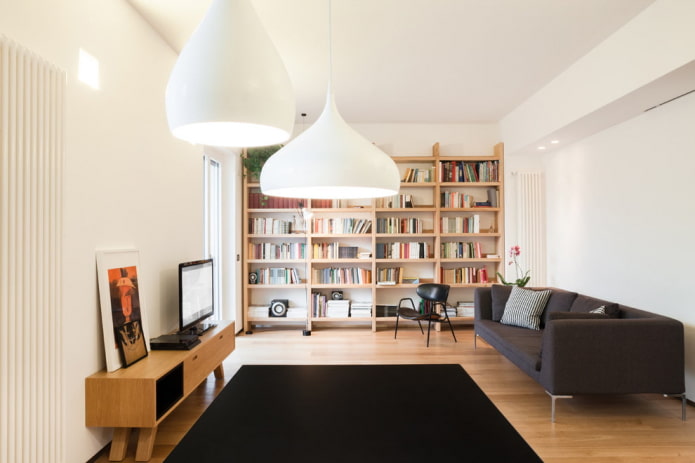

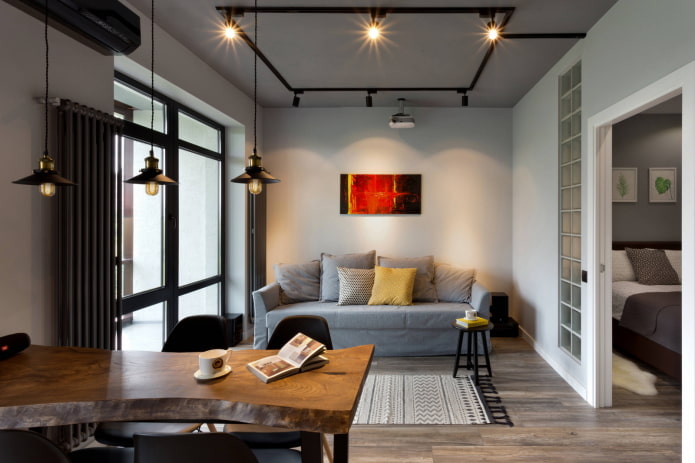
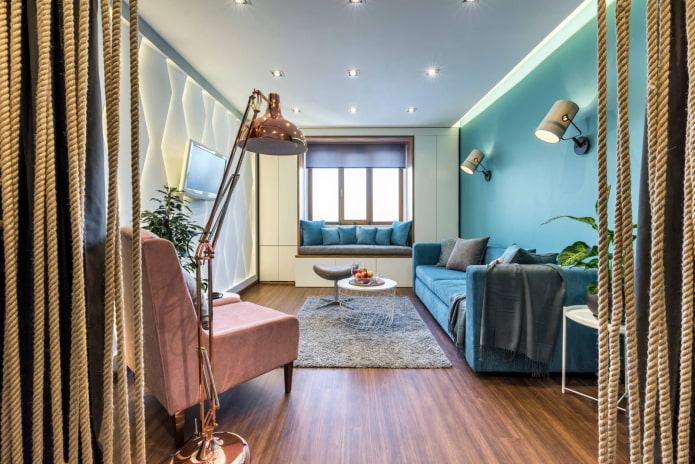
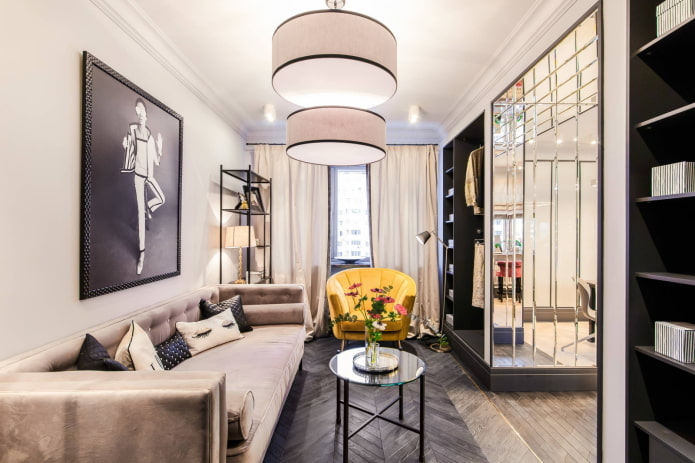
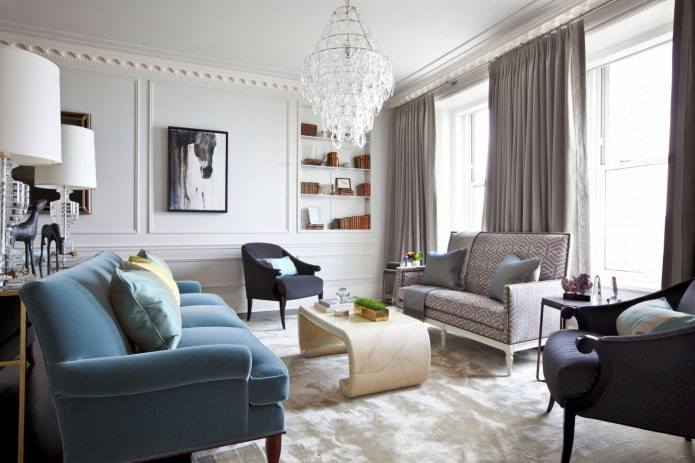
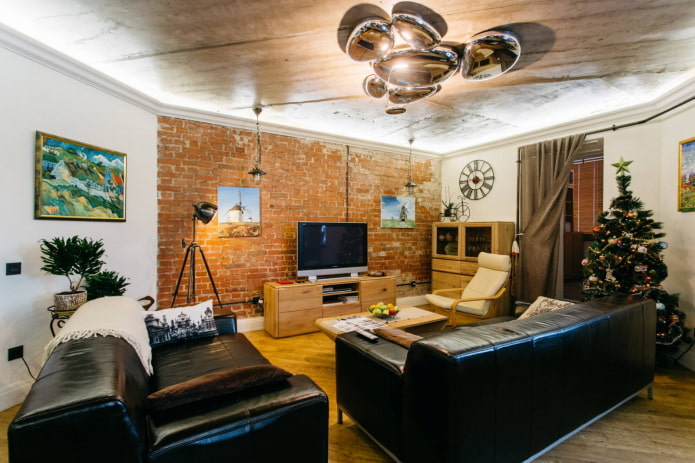
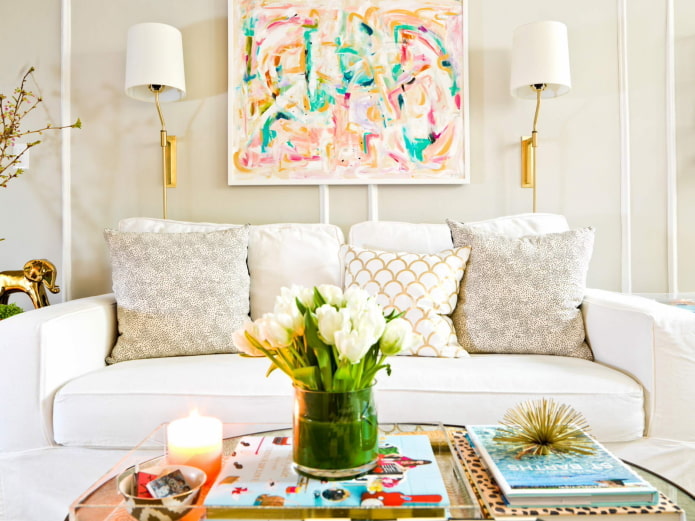
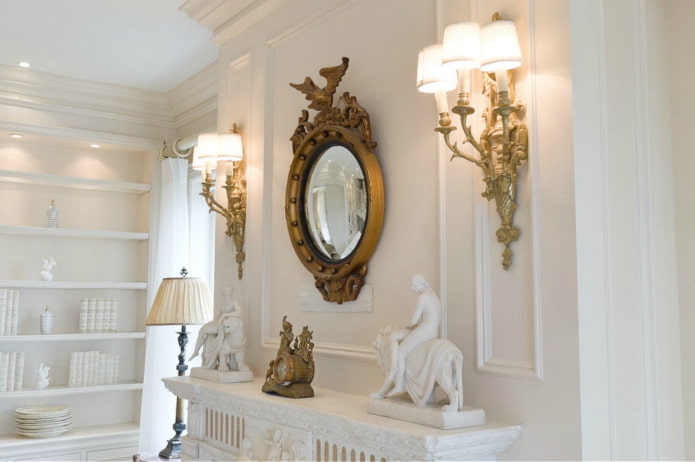
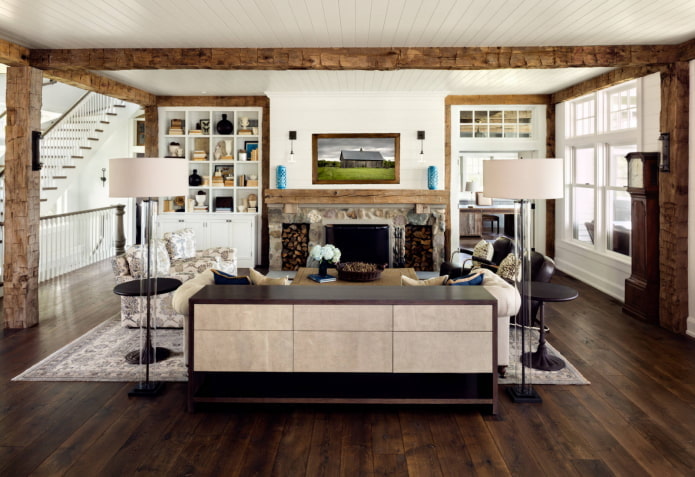
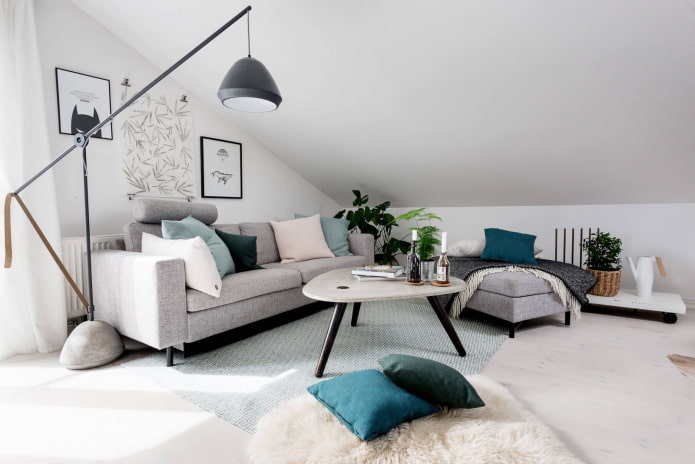
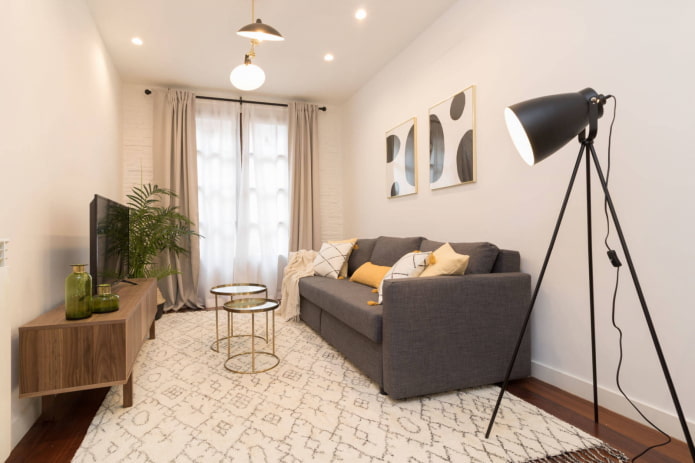
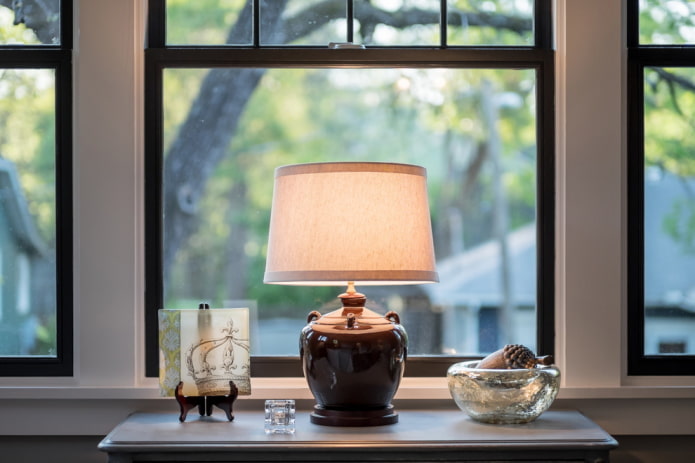
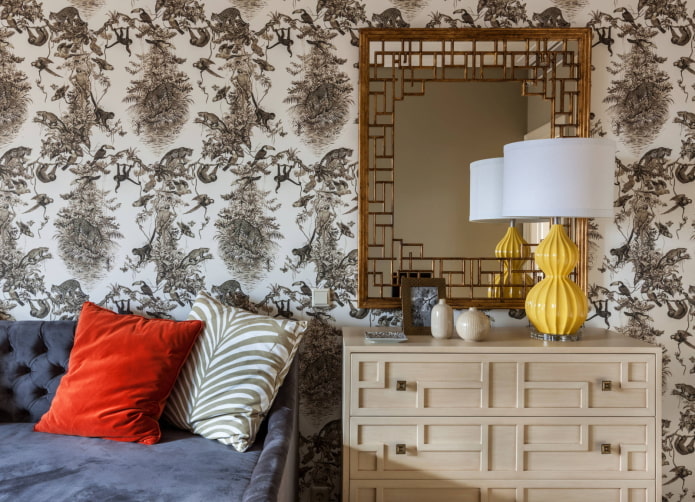
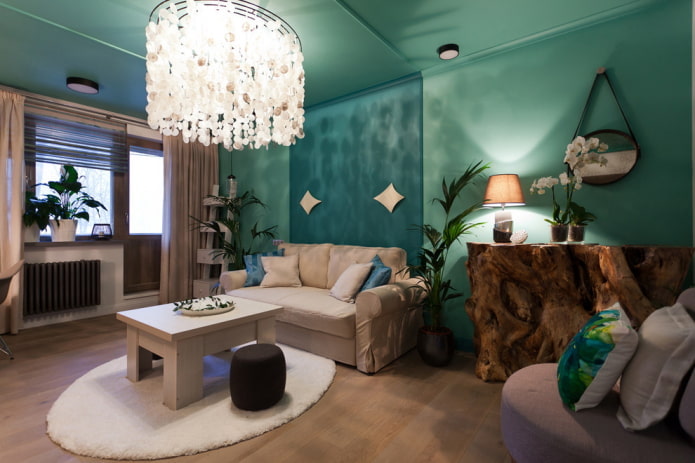
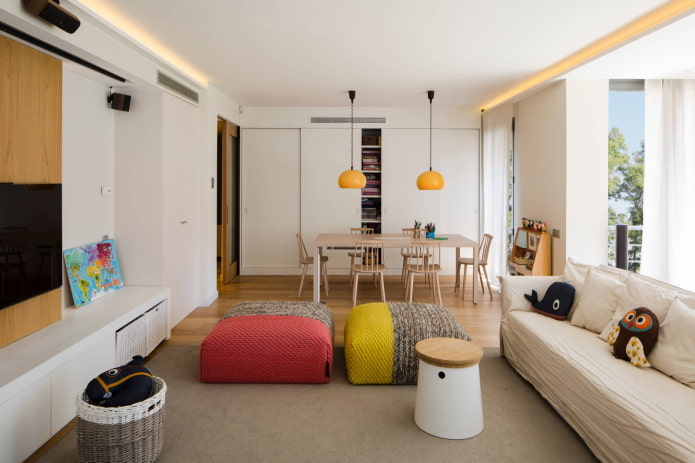
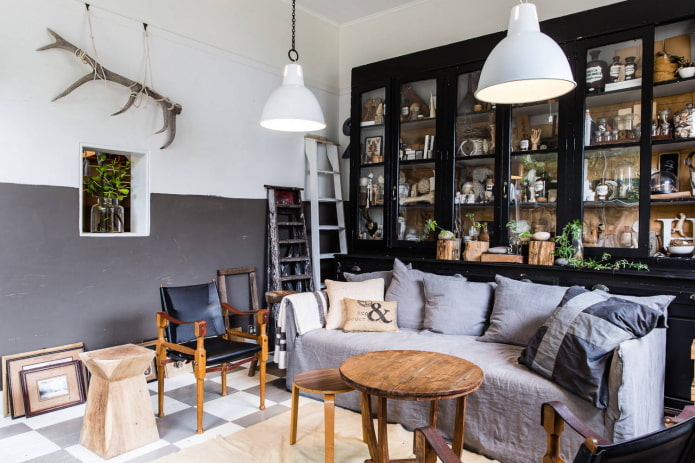
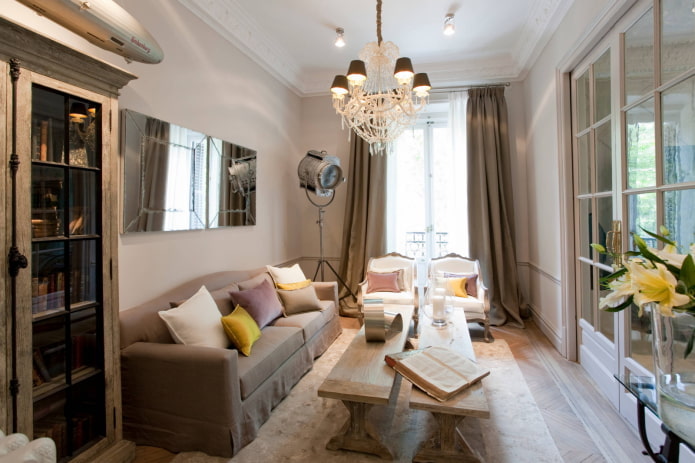
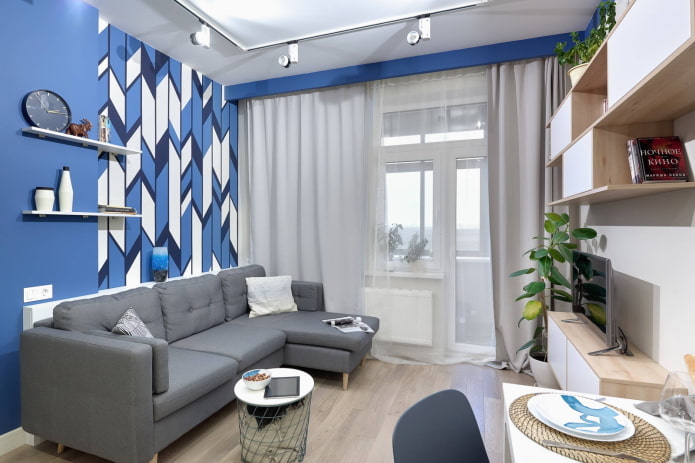
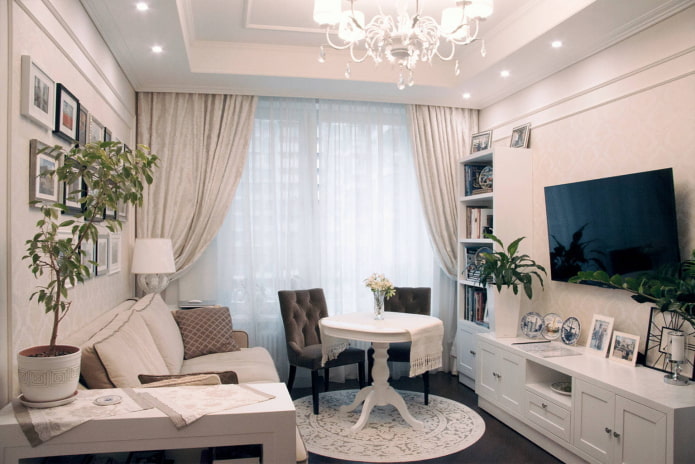
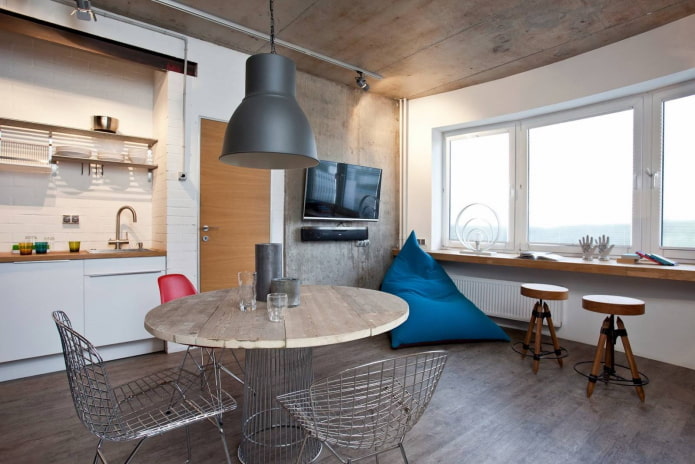
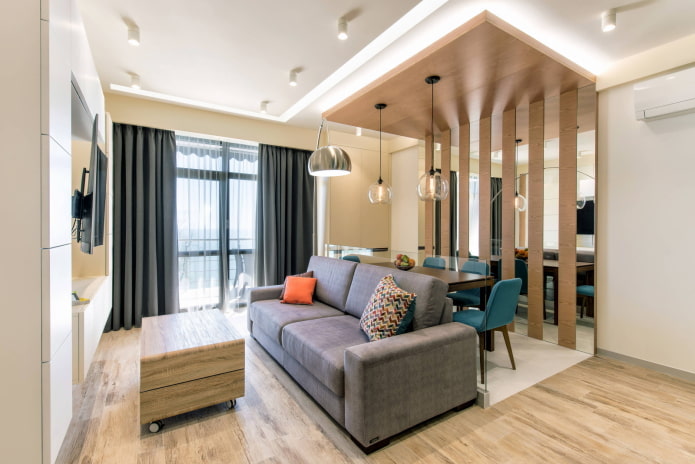
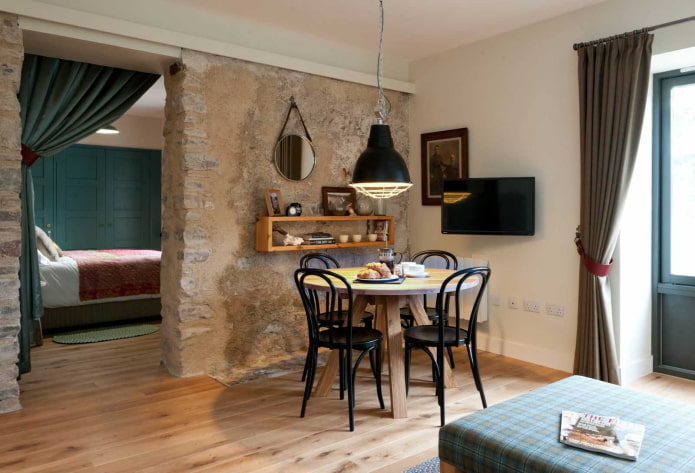
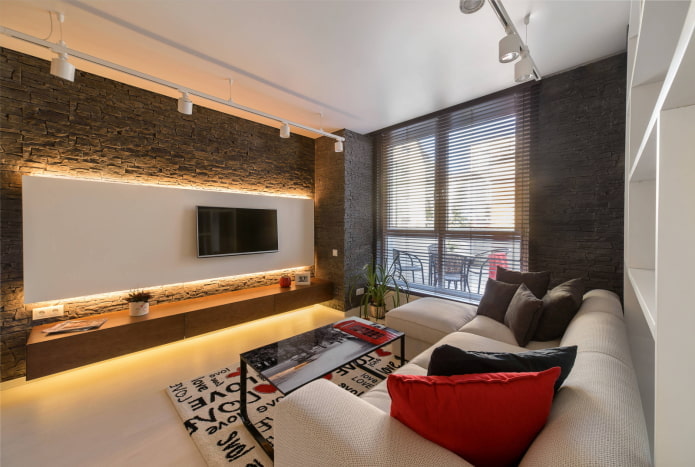
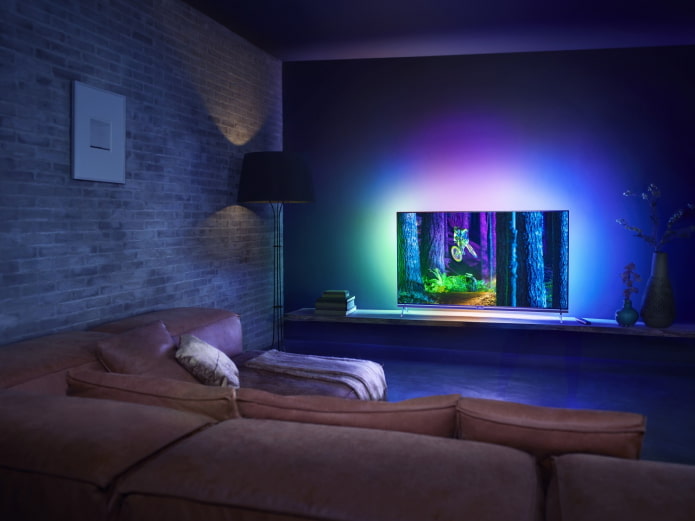
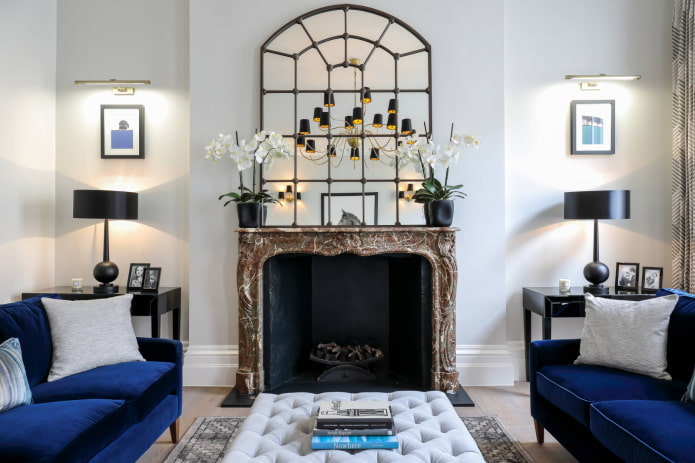
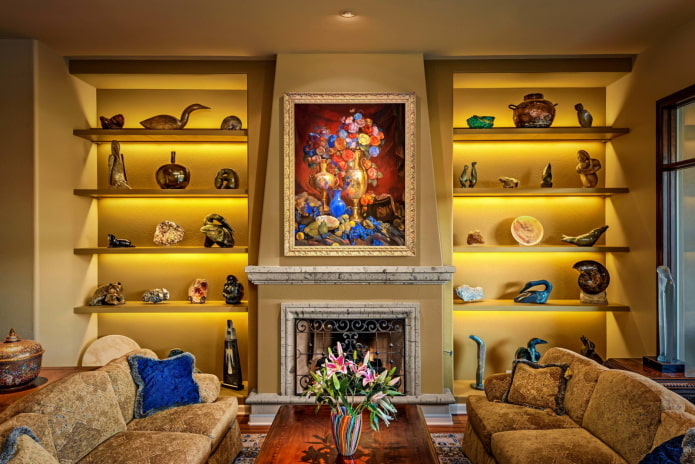

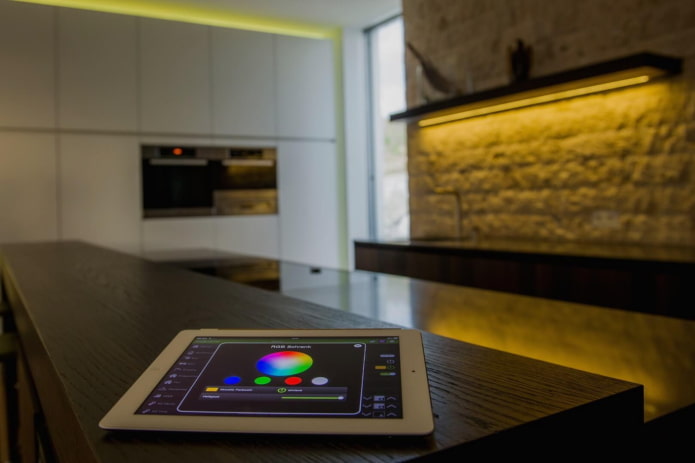
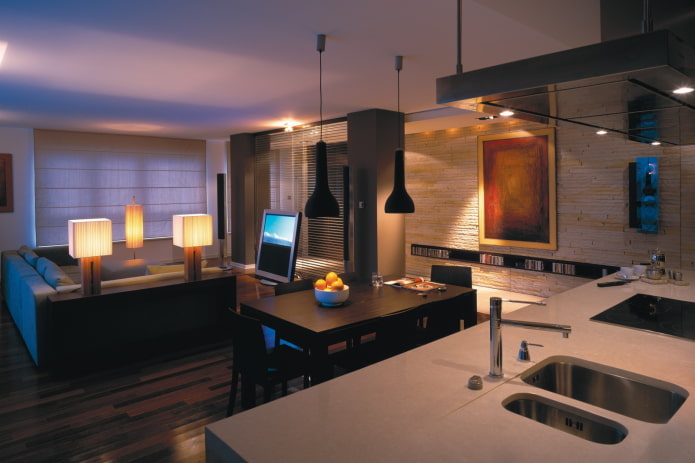
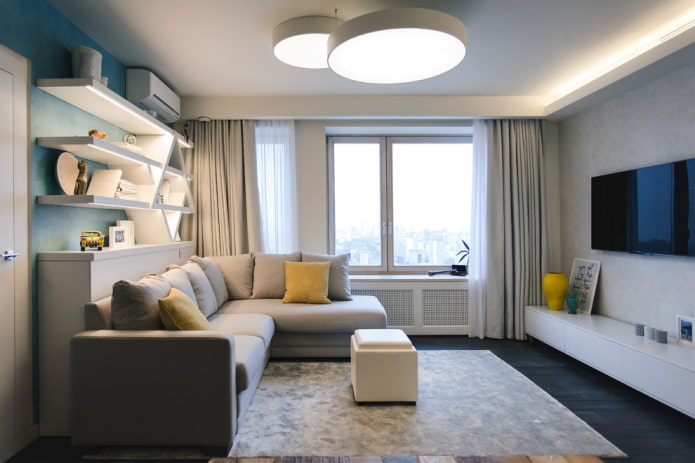
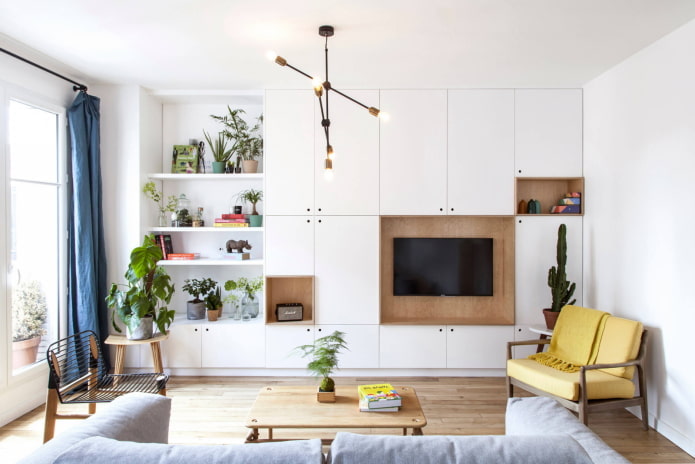
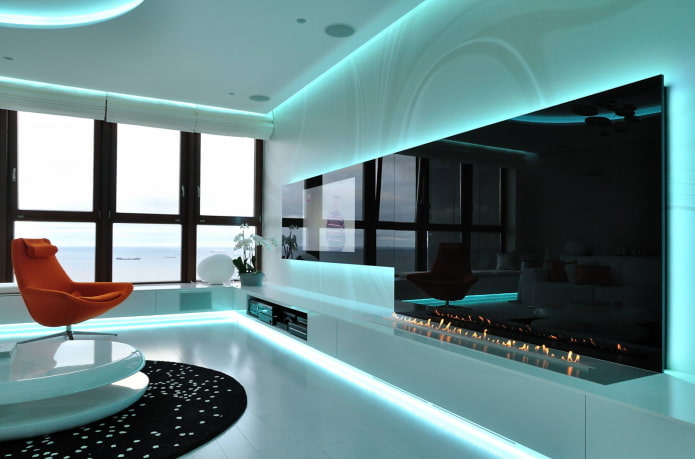
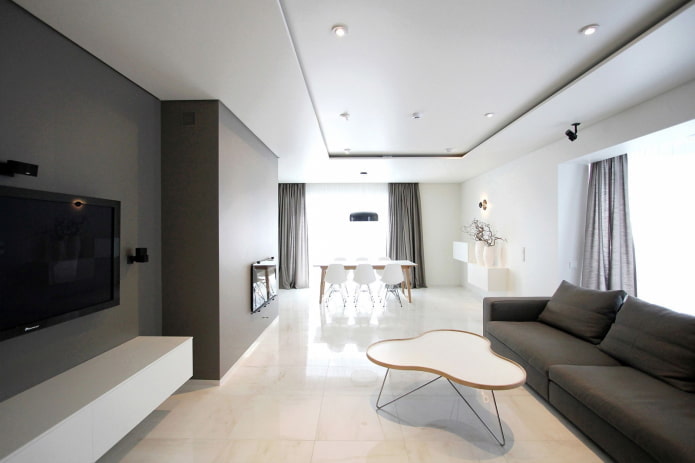
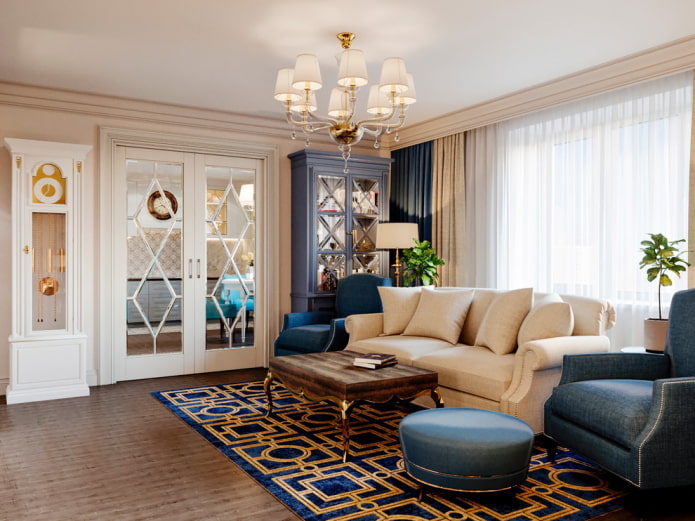
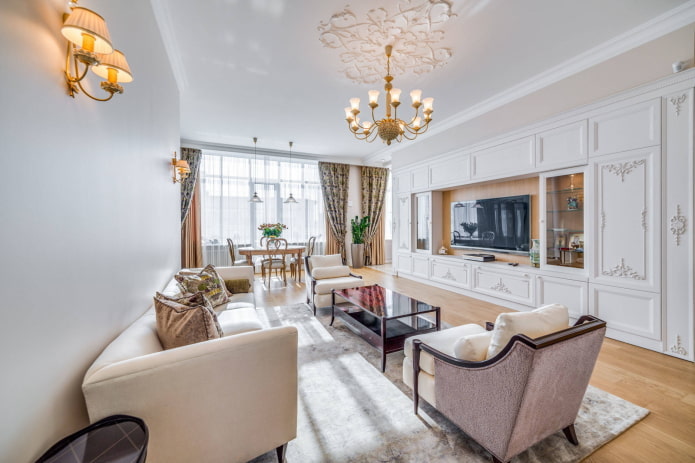

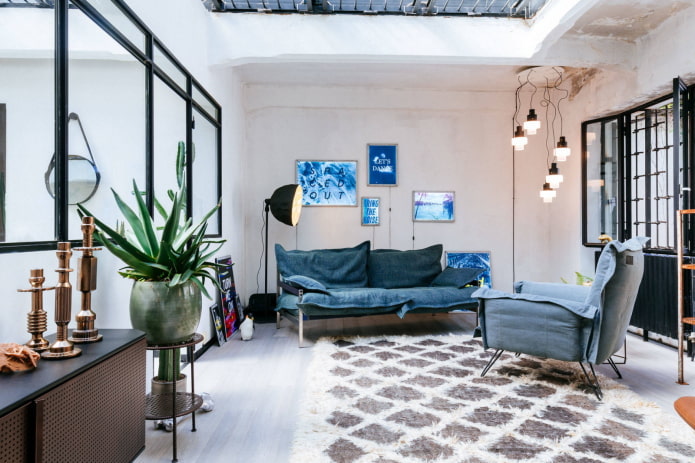

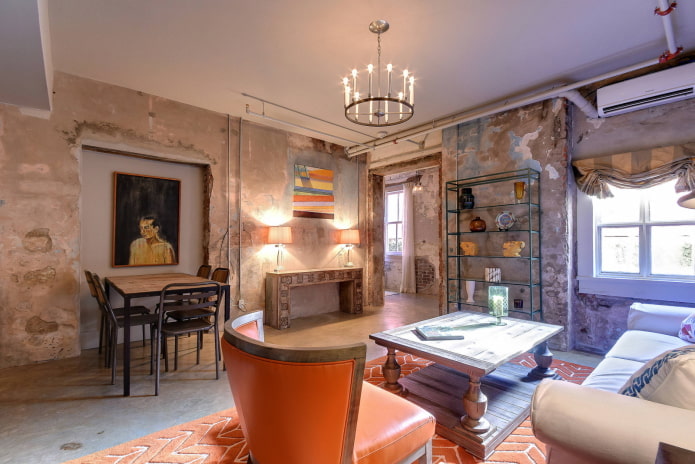
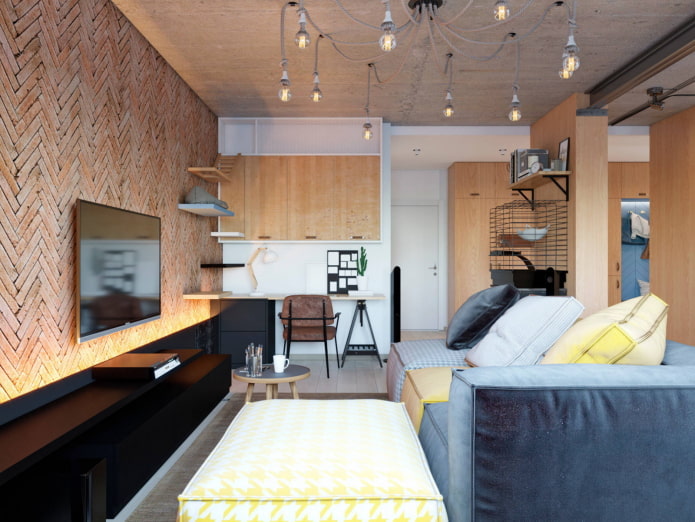
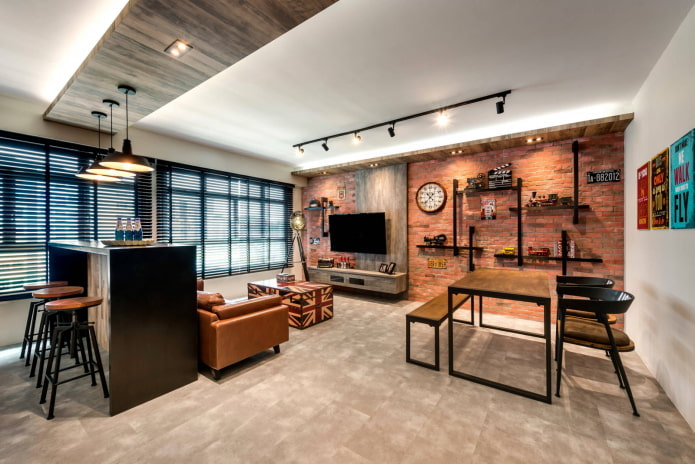
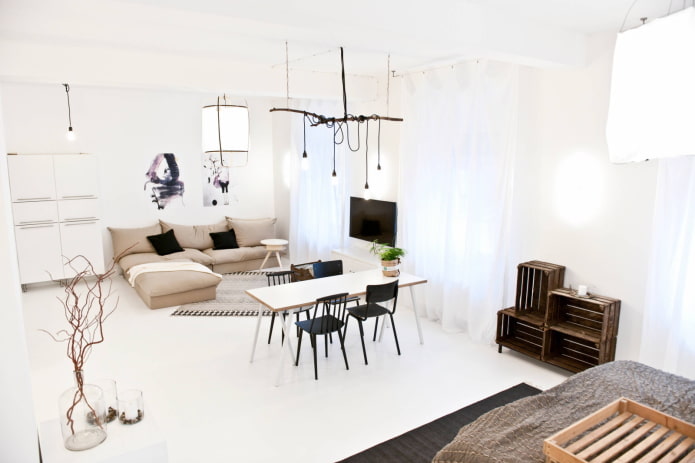



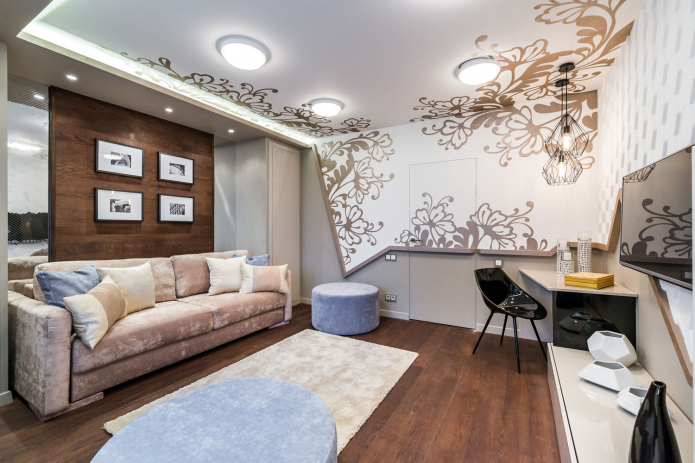
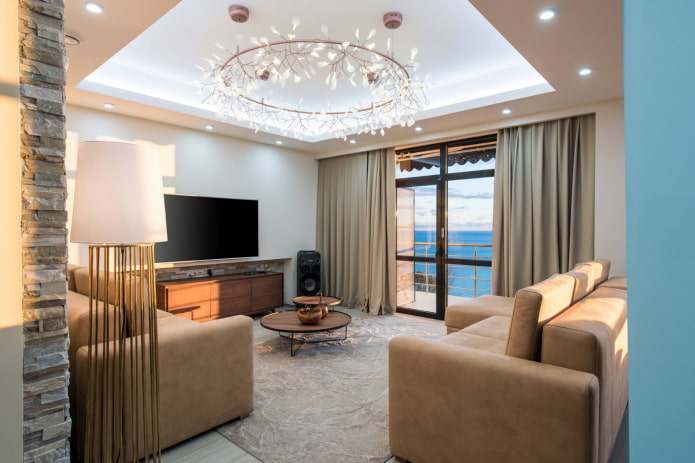
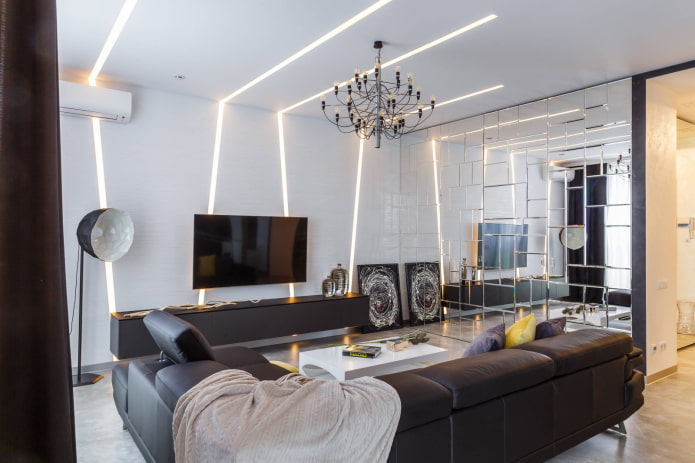
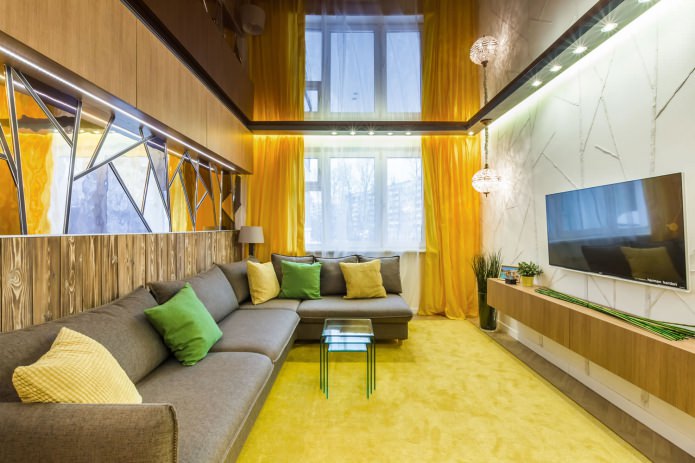
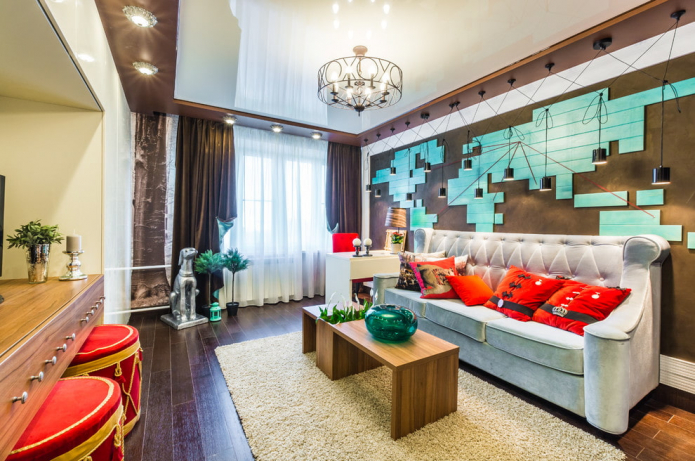
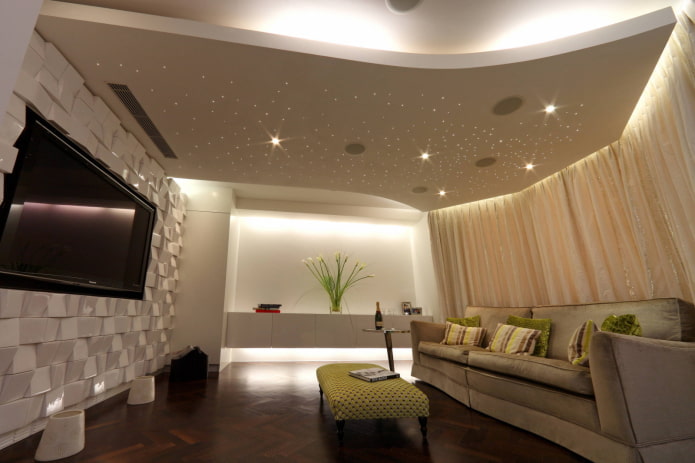
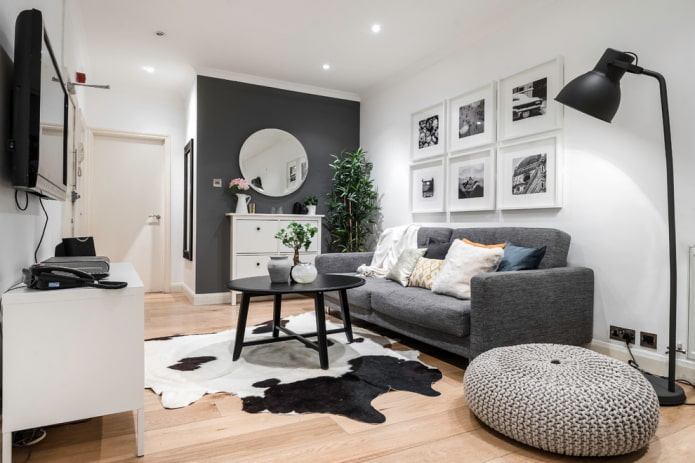
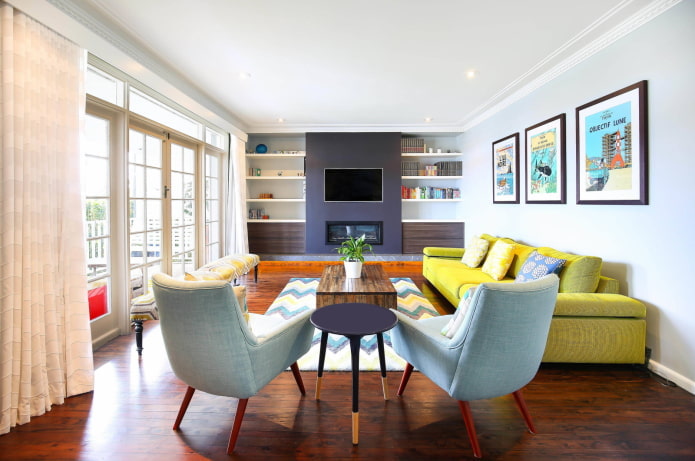
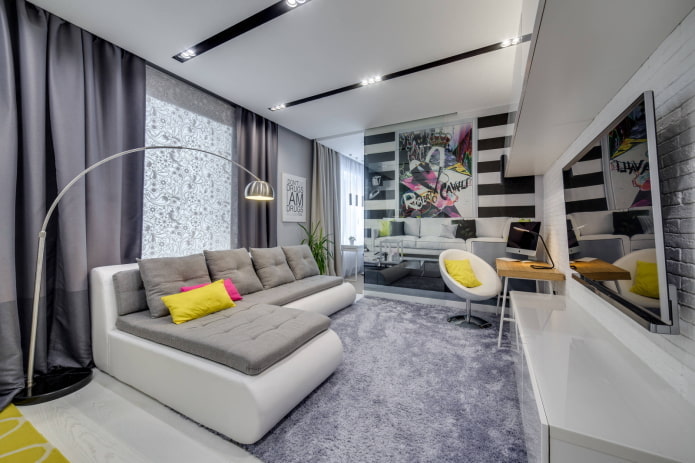
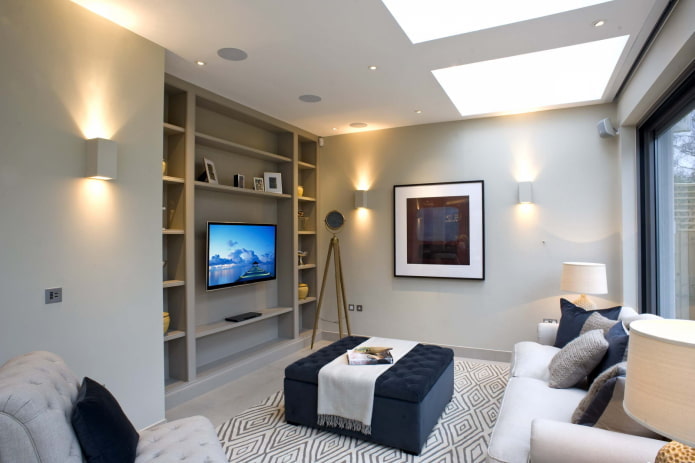
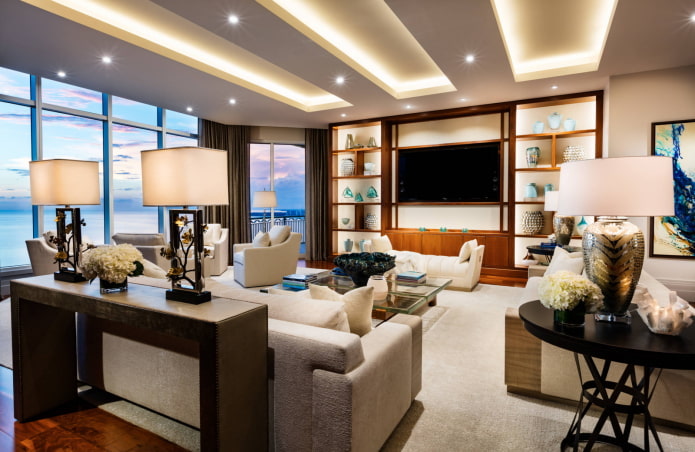
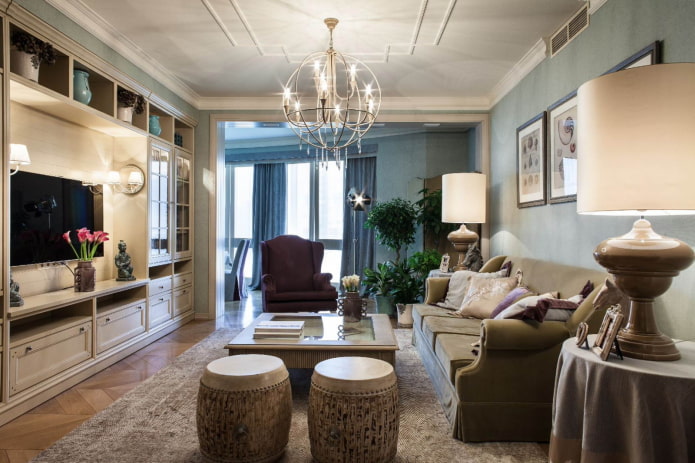

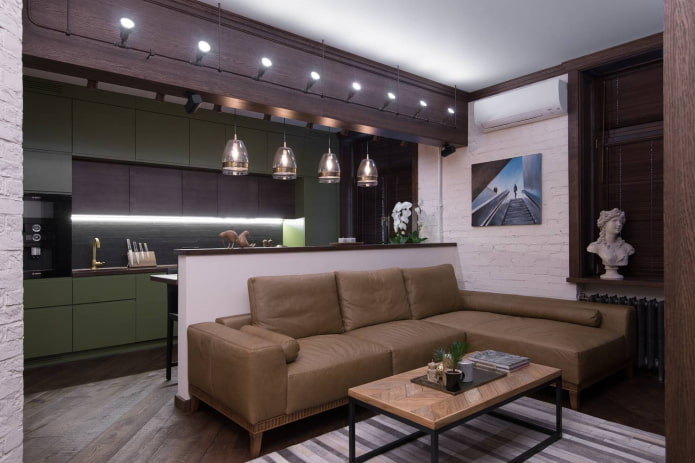

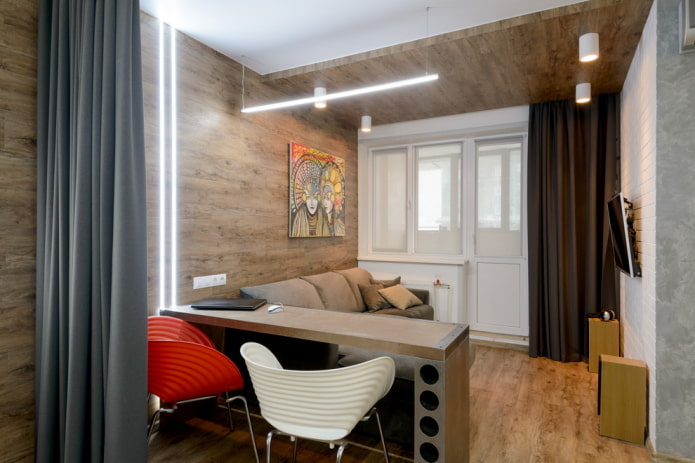
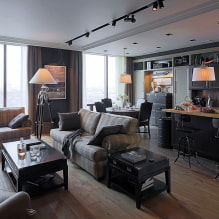
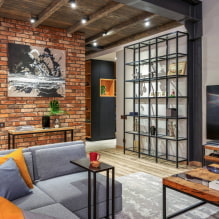
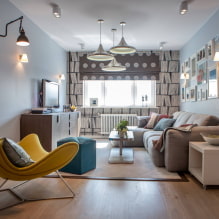
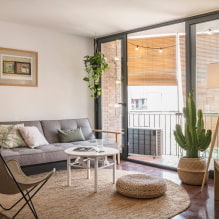
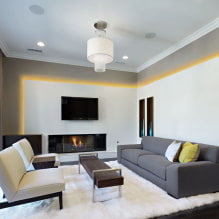


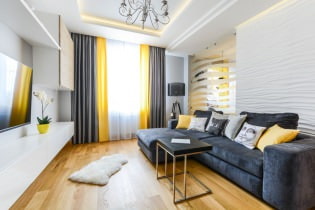 Choosing the best living room interior style: 88 photos and ideas
Choosing the best living room interior style: 88 photos and ideas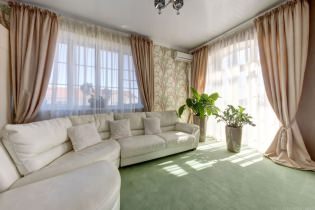 Curtains in the living room: 70 stylish photos of ideas in the interior
Curtains in the living room: 70 stylish photos of ideas in the interior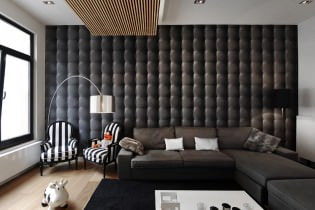 Wall decoration in the living room: choice of colors, finishes, accent wall in the interior
Wall decoration in the living room: choice of colors, finishes, accent wall in the interior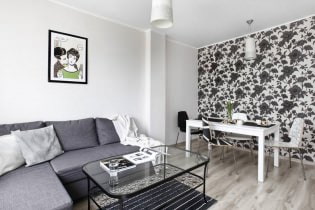 White and black and white wallpapers in the living room: 55 photos in the interior
White and black and white wallpapers in the living room: 55 photos in the interior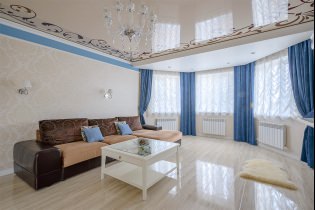 Stretch ceilings in the living room: views, design, lighting, 60 photos in the interior
Stretch ceilings in the living room: views, design, lighting, 60 photos in the interior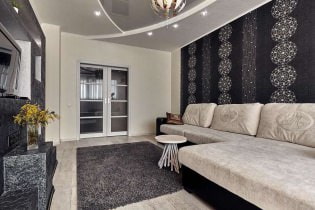 Wallpaper in the interior of the living room: 60 modern design options
Wallpaper in the interior of the living room: 60 modern design options